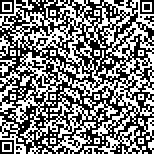| 摘要: |
| 从传统向现代转型的中国式现代化语
境下,中国社区历史脉络与现代社区演化路径
的纵贯研究较为缺乏,作为新时代城乡社区建
设行动指南的完整社区亦尚未建立适切的理论
框架。为了更系统地剖析从古至今中国社区发展
的历史和特点,基于文献研究与规划实践解读,
构建一个理解中国社区演进的综合框架:从国
家与社会视角分析古今社区的重要模式演变,
从制度与生活视角解析建国以来社区的发展转
型,从行为与空间视角剖析近年来社区的规划
治理实践。鉴于此,文章进一步提出基于“制
度—行为—空间”三位一体的完整社区理论分
析框架。研究认为,唐宋之际从里坊制到街巷
制,表征为传统基层社会从国家中的社会转向
社会中的国家;改革开放以来从单位制到社区
制,意味着现代社区从国家全能管控转向社会有限自组织;现代社区从单位大院、居住小区到完整社区的转变,表明社区发展的底层逻辑从制
度支配生活转向生活倒逼制度生活化。最后,指出完整社区应是公共服务均等、居民生活满意、
治理制度良善三个维度高质均衡的城市社会单元,作为中国式现代化社区的一种理想图景,希冀
对未来社区的理论建构与规划实践有所助益与启发。 |
| 关键词: 中国社区 国家与社会 制度与生活 行为与空间 完整社区 |
| DOI:10.13791/j.cnki.hsfwest.20240311 |
| 分类号: |
| 基金项目:国家社会科学基金重大项目(21&ZD175) |
|
| From Lifang and Jiexiang to integrated community: Model evolution, planning practiceand trend prospects in China |
|
HAN Shuai,YUAN Qifeng,LI Ruru,WANG Yankai
|
| Abstract: |
| In the context of China’s modernization, the integrated community stands as a strategic
guide for urban and rural community governance. Despite nationwide execution of pilot projects,
an appropriate theoretical framework to steer the practice of integrated communities is yet to
be established. Existing studies typically focus on historical fragments of China’s community
development or a modern local timeframe, discussing patterns and characteristics from a singular
perspective. However, there seems to be a scarcity of research on community pattern evolution from
a macroscopic or longitudinal standpoint. Moreover, modern community planning practice often
encapsulates the experiences of a particular city or project, with insufficient theoretical analysis of
the overall classification. The exploration of future communities and healthy living circles primarily
targets imagined living scenarios, with theoretical research being notably absent.
Clearly, understanding the historical characteristics and current pain points of communities
is vital for their future development. This paper constructs a comprehensive framework to
systematically and coherently analyze the history and characteristics of Chinese community
development from ancient times to the present. The analysis is threefold: firstly, it examines the
evolution of two significant models of ancient and modern communities from a “state and society”
perspective; secondly, it investigates the transformation of modern community development since
the inception of the PRC from an “institution and life” standpoint; and thirdly, it scrutinizes recent
community planning and governance practices from a “behavior and space” viewpoint.
From a “state and society” perspective, the shift from Lifang to Jiexiang is characterized by
the transformation of grassroots social organizations from being society within the state to the state
within society. The transition from the Danwei to the community system signifies the transformation
of the community from omnipotent national control to limited social autonomy. During the period
when the Danwei was dominant, the state and society were isomorphic; during the period when the
Jie-ju came into play, the state and society were separated; and during the stage when the community
was taking shape, the relationship between the state and society was being mutually reinforced.
From an “institution and life” perspective, the evolution of modern community planning from
unit yard and housing estate to community life circle indicates a shift in the underlying logic of
Chinese communities from institutional domination of life to life-forced institutionalization. During
the period of planned economy, life was institutionalized due to the regulation of life by the system,
so the Danwei was expressed in the form of a courtyard walled settlement. In the market economy,
the system of comprehensive control of life is gradually relaxed, the system is close to life andlife grows independently, the market forces and social organizations organically combine to optimize the allocation of urban resources, and the residential
community is mainly characterized as a gated contract community. The life circle and integrated community construction that is popular nowadays is a new
type of community practice under the mutual promotion of system and life.
From a “behavior and space” perspective, the shift from residential planning to life circle governance emphasizes the need for public services and
spaces of varying levels, distances, and types to cater to the daily needs of residents, and is committed to promoting the dynamics of living spaces at different
scales to match the diversified needs of different micro-individuals. This fully embodies the characteristics of fine governance and precise service of Chinese
modernized communities, and deeply meets the development requirements of people-centered urbanization and healthy cities, which means that community
planning in a real sense is gradually maturing in China.
Urban and rural communities are the basic units of interaction between the state and society at the grassroots level. Community research perspectives
such as “state and society”, “institution and life”, and “behavior and space” all have their own adaptability and limitations. The relationship between
“institution and life” is a continuation and deepening of the relationship between “state and society” at the meso and micro levels. This article combines
the development characteristics and governance practices of modern China, retains the “institution” in the analysis paradigm of “institution and life”, and
concretizes and decomposes “life” into the “behavior” of the living subject and the “space” of the living object. Among them, “institution” refers to the
formal rules for national management of society and community planning and governance, “behavior” refers to the daily living needs and behavioral patterns
of social groups, and “space” mainly refers to multi-scale and diversified public spaces and services.
In conclusion, this paper proposes an analytical framework of “institution-behavior-space” for the integrated community, envisioning it as a balanced
urban social unit providing equal public services, satisfactory resident lives, and robust governance. This new theoretical and analytical framework aims
to interpret the multiple connotations of the academic concept, administrative definition, and practical use of community and comprehensively analyze
the internal logic of the governance systemic, functional spatial, and social life of community development from various perspectives such as public
management, urban-rural planning, and sociology. Therefore, the integrated community analysis framework has a multi-scale and multi-dimensional
governance connotation, focusing on facility integrity and functional balance, from material space creation to healthy living governance. It is hoped that this
framework will contribute to the governance of Chinese modernized communities. |
| Key words: Chinese community state and society institution and life behavior and space integrated community |


